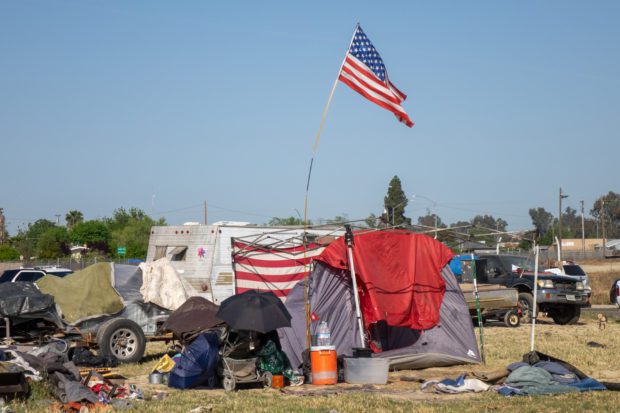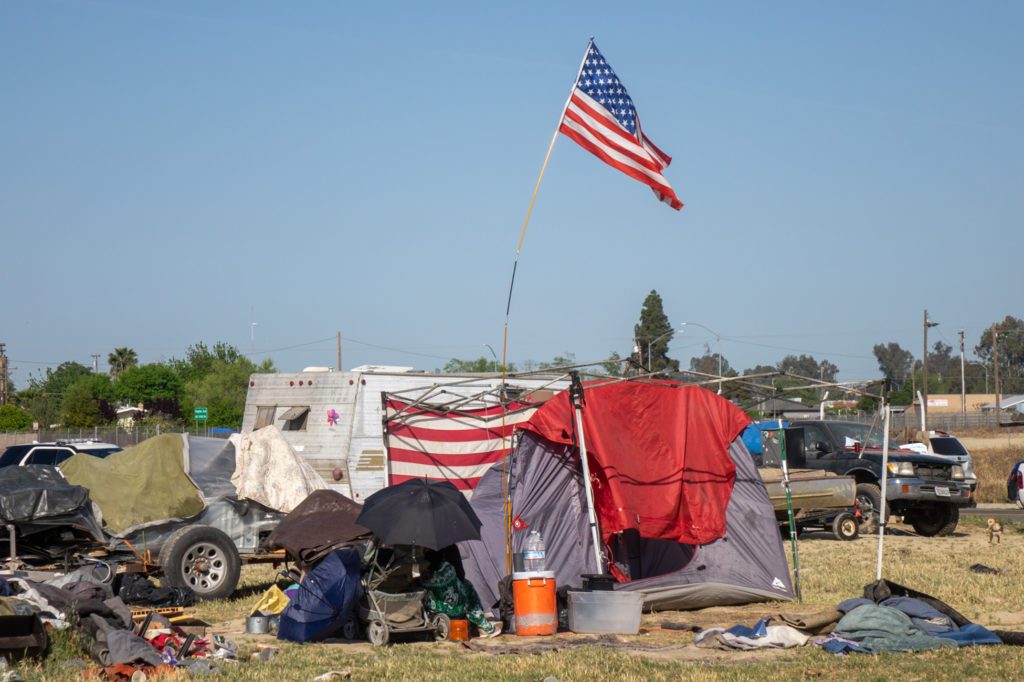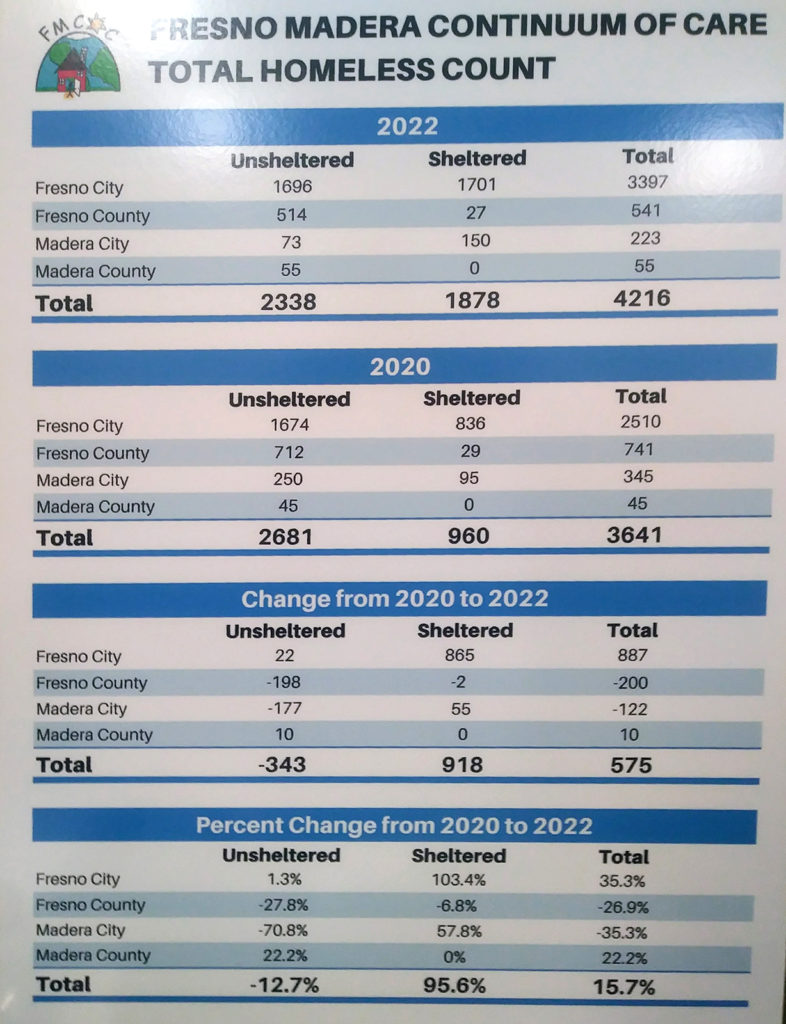

On July 14, the Fresno Madera Continuum of Care (FMCoC) held a press conference to announce the results of the 2022 Point in Time (PIT) Count of the unhoused population of the City of Fresno, Fresno County and Madera County. Fresno Mayor Jerry Dyer and Fresno County Supervisor Nathan Magsig were there to speak and answer questions.
Laura Moreno, chair of the FMCoC, and Jody Ketcheside, vice chair, presented the information and data. Two surveys were conducted, the PIT Count and the Housing Inventory Count.
The PIT Count was held on Feb. 23, a particularly cold night. The count was conducted by volunteers to count heads and identify “hot spots” where large concentrations of street family members are. The next day, a second group of volunteers went out to the “hot spots” to conduct detailed interviews.
Ketcheside stated that the count “was probably an undercount.” The count is a snapshot of the unhoused population of the city and counties on a single night, so extrapolation techniques are used to estimate numbers and a demographic breakdown. Other information used to gather data is from database records from the Homeless Management Information System (HMIS), paper surveys from non-HMIS shelters and electronic surveys from volunteers.

The 2022 PIT Count showed that 2,338 people were experiencing unsheltered homelessness, 1,524 were using emergency shelters and 336 were using transitional housing. This adds up to 4,216 people experiencing homelessness in Fresno, Fresno County and Madera County. The vast majority (3,397) are in the city of Fresno.
Demographic surveys indicate that 60% are male, 39% female and 1% transgender or gender nonconforming; 21% of the unhoused population are families, 25% are chronically homeless, 5% are veterans, 15% are survivors of domestic violence and 19% identified as having a serious mental health issue.
The 2022 Housing Inventory Count showed that 1,795 emergency shelter units, 358 transitional housing units, 389 rapid re-housing units and 2,559 permanent supportive housing units were operational. That is more than double the number of units from 2021. This reflects the large amount of Covid-related emergency funding from the state and federal governments in recent years.
A true accounting of all the recent funding and exactly how it was used is necessary, and the FMCoC should provide that. A Public Records Act information request will be forthcoming for this funding information in our efforts to follow the money. Despite the increase in temporary housing capacity, 4,216 people remain unhoused and 2,338 people are unsheltered every night.
Asked why a recent sweep on county property was carried out without offering shelter to the encampment residents as required by court decisions, Magsig insisted that shelter had been offered. However, interviews with people at the encampment indicated otherwise.
Magsig then brought forward Sonia De La Rosa from the County Administrative Office to explain that outreach workers from the Kingsview outreach team went to the site to do mental health assessments. Some people at the camp told me that 5–10 beds were offered at the Kingsview Manor, a shelter facility that provides mental health services. She did not have an answer to what shelter was offered to those who did not need those services.

Regarding the City, Dyer said “there are no more sweeps in Fresno because there are no more encampments of 10 or more people.”
“There is constant outreach to those on the streets offering shelter and services every day,” Dyer added, implying that shelter beds are actually available when they are not.
“From a safety and health perspective, I am opposed,” Dyer responded when asked about establishing safe camps as an interim, humane solution to the crisis. “You end up with things occurring, females being assaulted, drugs being sold, and there is violence. I am not for sanctioned encampments.”
However, people in encampments often support each other and protect each other, and they are usually safer than solitary camping, especially for women. It’s obvious that Dyer is ignoring successful safe camp results in other cities.
Dyer went on to say that the City intends to purchase more motels for shelter use, build more low-income housing and establish tiny home villages to address the crisis. These words ring hollow when you witness the daily suffering on the streets, witness the inhumane sweeps and hear the stories the street families tell of their encounters with the Fresno Police Department.
The city, county and FMCoC ignore the everyday reality and humanity of street family members, present a positive image of “all they are doing for the homeless” and are still failing to provide adequate services to those in shelters and those who are unsheltered. They are failing to provide permanent, long-term solutions such as Housing First, job training and assistance with job placement.
Until more housing becomes available, temporary safe camps with basic services should be established.
